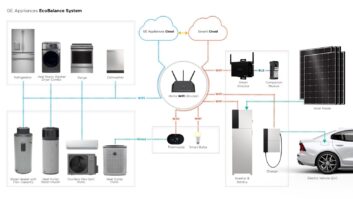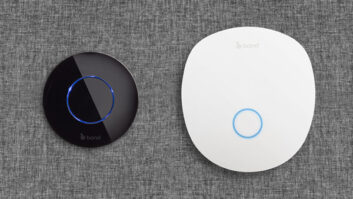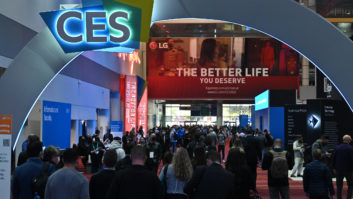WASHINGTON – The Federal Communications Commission greeted the new presidential administration with frenzied activity, including the expected resignation of Chairman William Kennard, who left his post with a call to Congress to accelerate the digital television transition process.
Not surprisingly, President George W. Bush wasted little time in designating FCC Commissioner William K. Powell, son of new Secretary of State Colin Powell, to take the vacated spot. In remarks at the recent CES, Powell indicated his belief that where possible, the market should be the judge of many pending communications decisions, including whether broadcasters transmit high-definition signals or multicast standard-definition television and data transmissions with their digital spectrum.
Gary Shapiro, president of the Consumer Electronics Association, hailed the appointment as positive for the consumer electronics industry.
“He understands our unique perspective, has attended the International CES to learn more about our industry, and he’s a fan of our products,” Shapiro said. “The commissioner is also a strong advocate of consumers’ rights. We look forward to working closely with him in his new role.”
One issue that apparently won’t have to be decided is the controversial use of modulation systems in the digital television broadcasting standard. In one of its last acts, Kennard’s commission voted to affirm 8-VSB to the exclusion of the COFDM format, vigorously championed by a group of broadcasters led by Sinclair Broadcasting. The FCC also started rulemaking on requiring TV sets to have DTV tuners.
The ruling came after joint committees of the National Association of Broadcasters and the Association for Maximum Service Television determined that field tests proved the 8-VSB system was sufficient by itself for the delivery of digital television services over the air (TWICE, Jan. 22, p. 1).
Not as finite was the FCC’s ruling on digital must-carry by cable operators. The FCC said that cable operators will not be required to carry both digital and analog over-the-air broadcasts, but left open the possibility of imposing digital must-carry requirements at a later date.
Commissioners who voted not to require dual carriage included chairman Kennard, and Republicans Powell and Harold Furchtgott-Roth.
The two remaining Democrats on the commission, Gloria Tristani and Susan Ness, voted against the order now, decrying the haste the commission appeared to be taking to complete the process before Kennard’s resignation took effect.
In a prepared statement, Powell said the decision complied with the law but suggested that broadcasters lobby Congress for dual carriage, “given that the statute clearly did not contemplate must-carry in a digital world.”
Cable operators have said that requiring dual carriage would prevent the carriage of other non-broadcast content and thus would violate their first-amendment rights. The FCC said its ruling could be revisited after operators convert to digital systems that enable much greater capacity than analog platforms.
The FCC did require cable must-carry for digital-only TV stations and digital TV broadcasters who have turned over their old analog channels, although it did not require cable operators to carry more than the primary video signal of a DTV station and other program-related content. That latter ruling means cable operators will not be required to carry all multiplexed digital-TV signals, with television broadcasters deciding which multiplexed signal is its primary program.
In an outgoing letter to Congress, Kennard reiterated statements he made in a speech late last year, including a call for Congress to consider new mandates on commercial TV stations to move the transition along.
TV stations using channels 52 through 69 should be required to turn over their analog licenses by Dec. 31, 2006, instead of waiting until 85 percent of households in a market have digital receivers as stated in current law, said Kennard. Spectrum squatters’ fees should apply to analog channels 2 through 51 after Dec. 31, 2006, when he said spectrum fees should be imposed on an annually escalating schedule.
On the issue of digital receivers, Kennard said Congress should consider ordering all new TV sets 13 inches or larger to include digital tuner/decoders. He suggested the order be phased in starting with the largest and most expensive digital-TV sets before requiring the capability in smaller, more affordable sets.
The FCC said it realized that they are not widely available and asked for comment on whether requiring the inclusion of receivers in television sets would help boost production volume and cut prices.
Consumer advocacy groups and CEA have protested the recommendation, because, they say, requiring digital receivers in television sets will drastically increase prices.
Kennard also recommended that Congress step in to resolve digital copyright issues if the related industries continue to drag out the process of reaching voluntary agreements.
In other DTV rulemaking issues, the FCC determined:
- Cable operators will be required to carry digital-TV broadcast signals on the basic service tier, but they will not be mandated to require subscribers to obtain set-top boxes to view digital-TV signals.
- Cable operators will be required to carry closed captioning, V-chip data, Nielsen Media Research ratings data and channel mapping and tuning protocols, also called PSIP, along with DTV broadcast signals.
- Internet and electronic-commerce data services that are not related to the primary DTV program will not be required for carriage. Cable operators will not be required to carry Internet and electronic-commerce data services unrelated to the primary video signal being carried and digital electronic program guides are subject to “fact-based program-related analysis.”
- Cable operators may convert over-the-air DTV signals from the 8-VSB modulation format to either 64 or 256 QAM formats, without having to pass through the 8-VSB signal.













